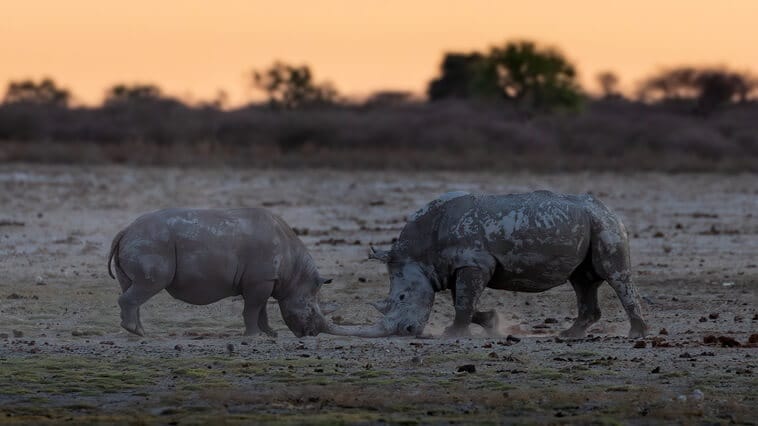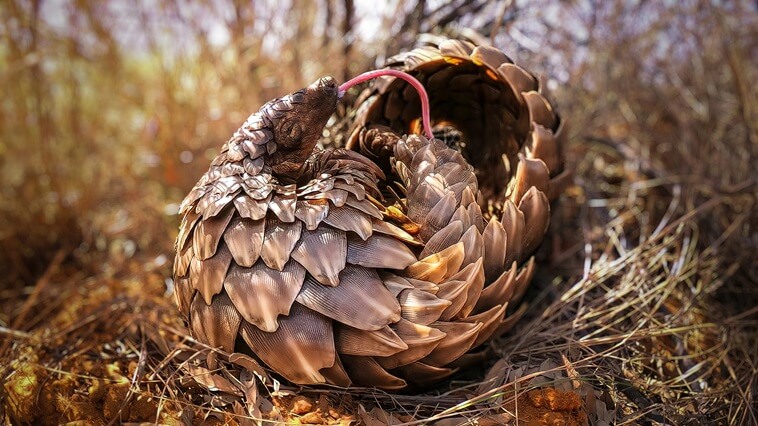Wildlife Monitoring South Africa: Your Conservation Experience
Khamab Kalahari Reserve, situated in the malaria-free Eastern Kalahari Bushveld, is a sanctuary for some of Africa’s most iconic and elusive species. Cheetahs, lions, black and white rhinos, brown hyenas, pangolins, and African wild dogs are just a few on our agenda. On our wildlife monitoring South Africa safari, you won’t simply see these animals; you’ll play a role in understanding their movements, threats, and population health. Join our search for these Kalahari legends to protect the future of this extraordinary landscape through effective wildlife monitoring.


Contribute to Wildlife Monitoring South Africa – Track Africa’s Rarest Wildlife

Kalahari Conservation: Predator Monitoring
Join our predator monitoring initiatives, based on the ecological needs of the reserve, focusing on the crucial impact that large carnivores play in Khamab Kalahari Reserve. Our ongoing work with African wild dogs, cheetahs, and lions aims to determine population dynamics, kill frequency, and prey selection and to learn how these remarkable species adapt to pressures within this landscape. While only monitored on an ad hoc basis as and when we encounter them, other key predators on our research agenda include leopards, both hyena species, and vultures. To fully grasp the dynamics of prey and predator, we sometimes need to be prepared for data collection that extends into the nocturnal hours, when the Kalahari comes alive with unseen dramas.

Tracking the World’s Most Trafficked Mammal – Pangolin Monitoring
Join us on the front lines of pangolin conservation in the Kalahari. While best known for its iconic large carnivores, Khamab Kalahari Reserve is also home to many smaller mammals. We aim to contribute to pangolin research through an effective monitoring project. After all, pangolins are the earth’s most trafficked mammal. As conservation guests, you’ll help us delve deeper into understanding the behaviors and habitats of these elusive creatures in the Eastern Kalahari Bushveld to build crucial knowledge for their protection. Monitor movements and feeding behaviors, identify favored food, set camera traps, and search for pangolin scat. Accompanying night drives may also reveal fascinating nocturnal life like lions, aardwolves, aardvarks, polecats or hyenas – all part of this dynamic ecosystem.

Your Eyes on the Kalahari: Discover Secrets Through Camera Traps
Camera traps are our research workhorses! Strategically placed across the vast reserve, they provide glimpses into wildlife presence, behavior, and population dynamics. Be part of camera trap deployment, data collection, and analysis with the hope of identifying individuals — think wild dog coat patterns or a leopard’s unique spots. These camera trap sites have been carefully selected and this activity relies on dedicated guests as camera trap placements on 240 000 acres can be located hours apart. Camera traps are no small task! This hands-on participation in Kalahari conservation science offers a deep connection to the landscape and contributes directly to the reserve’s ecological management decisions.

Data that Shapes Kalahari Conservation: Wildlife Surveys
Regular game counts are the pulse of responsible wildlife management, and at Khamab Kalahari Reserve, you’ll play a vital role in collecting that essential data. Join our research team as we survey the reserve recording wildlife populations, location, age and sex ratios, and behaviors. This isn’t just spotting animals—it’s uncovering clues about the Kalahari’s complex ecosystem and monitoring ecosystem health in real-time. Shifts in wildlife abundance or behavior can warn of looming ecological issues, allowing proactive interventions. You’ll learn how to track predators, distinguish animal markings, and understand the subtle signs left by even the most elusive species. The information you gather will directly inform the reserve’s conservation strategies, making you a partner in protecting the Kalahari’s future.

Frontlines of Conservation: Assist Anti-Poaching Efforts
Anti-poaching is a relentless battle and a harsh reality of the poaching crisis casting a shadow over Kalahari conservation. Khamab Kalahari Reserve is no exception, and by joining us you get the opportunity to experience the urgency and importance of antipoaching efforts. We assist the reserve’s skilled anti-poaching team as they tirelessly patrol this wildlife reserve. Look for subtle signs of human intrusion, collect critical data for targeted protection strategies, and monitor waterholes where vulnerable animals congregate. Your vigilance acts as a deterrent, potentially saving an iconic rhino or another targeted species from a cruel fate. This impactful experience goes beyond simple observation, making you a true partner in wildlife defense. Your eyes and ears do make a difference!
Activity Participation – Wildlife Monitoring
The unpredictable nature of wildlife means our Kalahari Safari activities can vary depending on the season or even unforeseen ecological needs. While some activities, like wildlife monitoring, occur year-round, others, like plant surveys, might have specific seasonal windows. Some tasks might require intense concentration for extended periods. The good news? The longer you stay, the more diverse experiences you’ll have! We prioritize real conservation efforts, so participation may not always involve every activity. This ensures your contribution directly benefits conservation.
Dive Deeper: Understand and Protect the Kalahari Ecosystem
Our wildlife monitoring and research education sessions go beyond facts, figures, and simple wildlife monitoring, transforming you into a more informed conservation partner. Led by experienced staff, uncover fascinating details about the Kalahari’s unique ecology, animal behaviors, and the vital work of habitat restoration. Explore the urgent realities of the rhino poaching crisis, anti-poaching strategies, and how ethical tourism empowers conservation. Grasp the impact that these shrinking populations have on the delicate balance of this environment.
Through wildlife monitoring, get hands-on with tracking techniques, both traditional (spoor, signs of movements, bird calls, etc.) and high-tech (radio antenna and GPS), understanding how researchers uncover the secrets of even elusive species. Explore the delicate predator and prey balance and grasp the hidden impact of alien invasive species on the fragile Kalahari landscape. Gained knowledge that will change how you see every future wild encounter. From tiny beetles to mighty predators, you’ll gain a new appreciation for wildlife monitoring South Africa and the interconnected web of life within this reserve and how to preserve it.


Witness Rare Conservation Events in Action
While every day brings unique insights on Khamab Kalahari Reserve, occasionally, special events offer an unprecedented glimpse into critical wildlife management. Experience firsthand the intricate work that keeps this ecosystem thriving and potentially assist veterinarians. These activities can range from ear notching lions, to capturing and translocation of wild dogs, lions or other predators to different reserves to ensure proper genetic diversity or to contribute to the conservation of the species elsewhere, tracking collars may be fitted or removed from specific animals, game capture teams may be required to remove some animals to maintain a balanced ecosystem (population control), whilst other animals may need to be darted for veterinary care or moved to a quarantine zone for disease testing.
While we cannot predict timing, you may have the once-in-a-lifetime opportunity to witness these conservation efforts unfold during your stay. Under strict ethical guidelines, qualified vets and reserve scientists make all decisions based on conservation priorities. This isn’t tourism entertainment, but a deep insight into what it takes to protect fragile Kalahari ecosystems. This is authentic conservation at its most dramatic.
Under no circumstances will an animal be darted for guest purposes. This project falls in-line with the ecological needs of the reserve only!




Book Now
Ready to start your Kalahari conservation Safari? Contact us today!
More questions, read our FAQs or our Testimonials.



